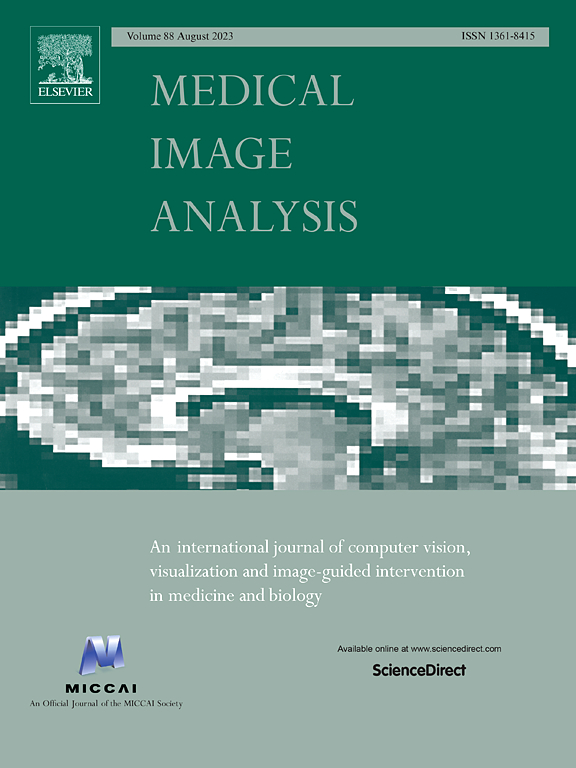Bi-variational physics-informed operator network for fractional flow reserve curve assessment from coronary angiography
IF 10.7
1区 医学
Q1 COMPUTER SCIENCE, ARTIFICIAL INTELLIGENCE
引用次数: 0
Abstract
The coronary angiography-derived fractional flow reserve (FFR) curve, referred to as the Angio-FFR curve, is crucial for guiding percutaneous coronary intervention (PCI). The invasive FFR is the diagnostic gold standard for determining functional significance and is recommended to complement coronary angiography. The invasive FFR curve can quantitatively define disease patterns. The Angio-FFR curve further overcomes the limitation of invasive FFR measurement and thus emerges as a promising approach. However, the Angio-FFR curve computation suffers from a lack of satisfactory trade-off between accuracy and efficiency. In this paper, we propose a bi-variational physics-informed neural operator (BVPINO) for FFR curve assessment from coronary angiography. Our BVPINO combines with the variational mechanism to guide the basis function learning and residual evaluation. Extensive experiments involving coronary angiographies of 215 vessels from 184 subjects demonstrate the optimal balance of BVPINO between effectiveness and efficiency, compared with computational-based models and other machine/deep learning-based models. The results also provide high agreement and correlation between the distal FFR predictions of BVPINO and the invasive FFR measurements. Besides, we discuss the Angio-FFR curve assessment for a novel gradient-based index. A series of case studies demonstrate the effectiveness and superiority of BVPINO for predicting the FFR curve along the coronary artery centerline.
求助全文
约1分钟内获得全文
求助全文
来源期刊

Medical image analysis
工程技术-工程:生物医学
CiteScore
22.10
自引率
6.40%
发文量
309
审稿时长
6.6 months
期刊介绍:
Medical Image Analysis serves as a platform for sharing new research findings in the realm of medical and biological image analysis, with a focus on applications of computer vision, virtual reality, and robotics to biomedical imaging challenges. The journal prioritizes the publication of high-quality, original papers contributing to the fundamental science of processing, analyzing, and utilizing medical and biological images. It welcomes approaches utilizing biomedical image datasets across all spatial scales, from molecular/cellular imaging to tissue/organ imaging.
 求助内容:
求助内容: 应助结果提醒方式:
应助结果提醒方式:


